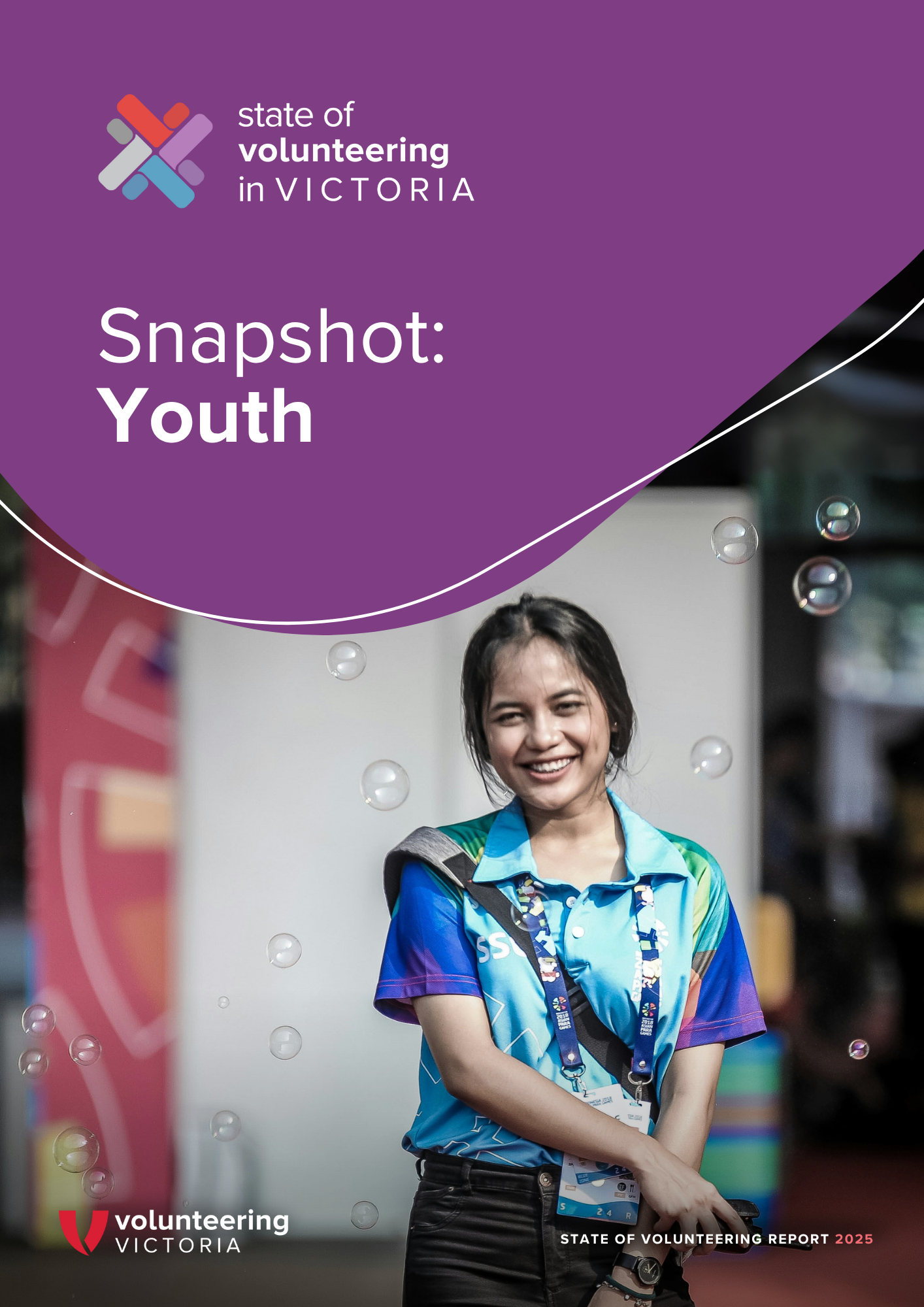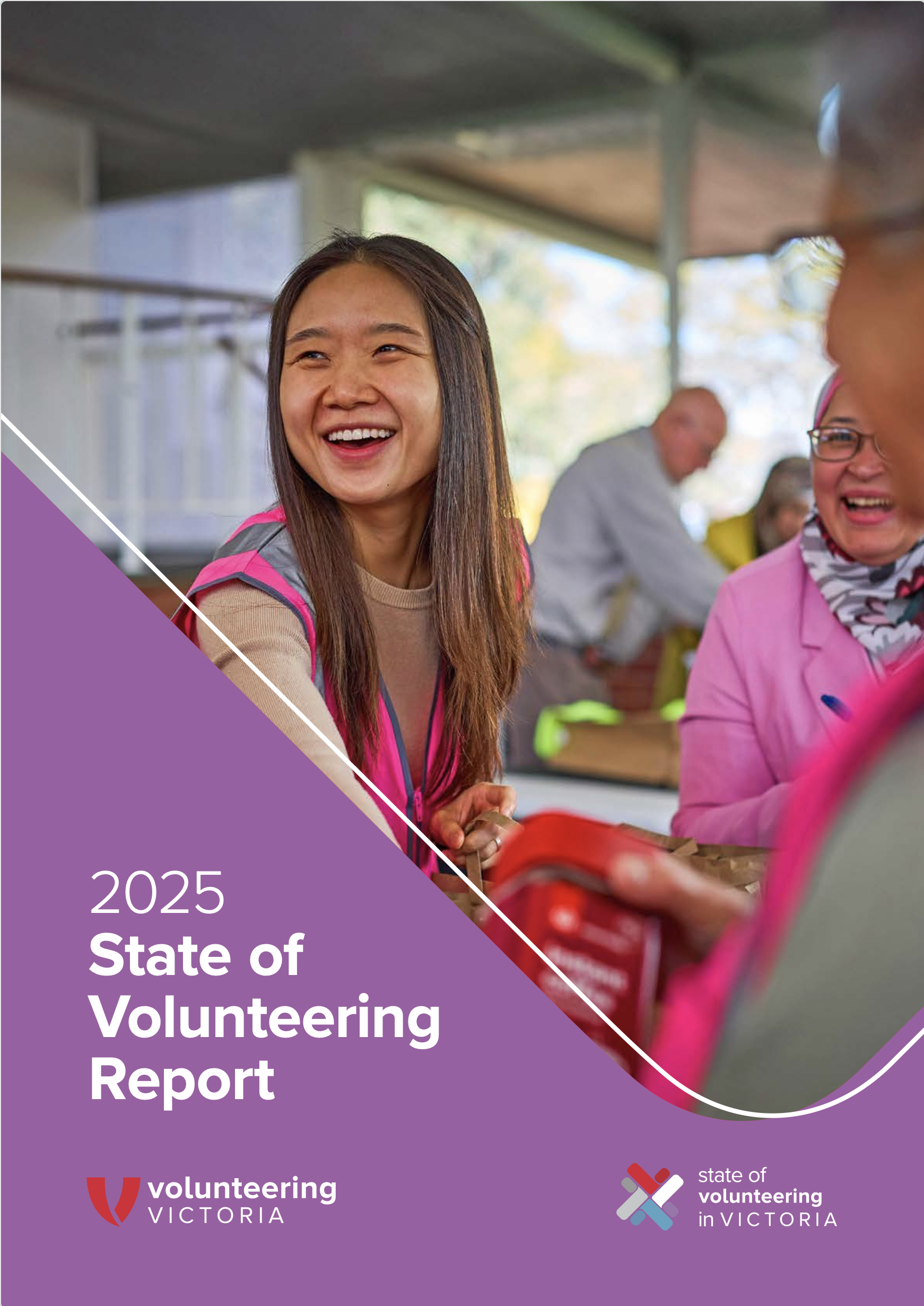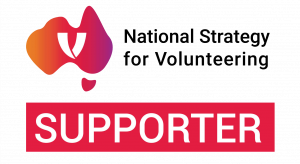
Think young people are disengaged? Think again. The latest State of Volunteering Report (SOVR) tells a very different story.
Young Victorians (15–24) are not only the most engaged age group – with 69.4% volunteering – they also contribute the highest number of hours annually. Far from being absent, they’re leading the way. For organisations, this is both good news and a clear call to adapt how we engage and support the next generation of volunteers.
What drives youth volunteers
For many young people, volunteering isn’t just about giving back – it’s also about moving forward. Career development is a strong motivator, with young volunteers often looking for experience, networks, and references that will support their studies or first steps into the workforce.
Recognition also plays a key role, but it isn’t always about certificates and awards. What resonates most for young volunteers are references, LinkedIn recommendations, and other forms of acknowledgement that demonstrate value in a professional context.
Social connection matters
Another misconception is that young people would prefer to volunteer alone, perhaps only in digital spaces. In fact, 44% prefer to volunteer with others, highlighting the importance of teamwork and shared experiences. The disruption caused by COVID-19 has made social connection even more valuable. Many young people are seeking ways to expand their social circles, meet new people, and feel part of a community through volunteering.
For organisations, this is a reminder that roles designed with teamwork, peer connection, and group activities aren’t just nice-to-have; they’re key to sustaining youth engagement.
This could look like:
- Designing group-based roles or projects where volunteers collaborate on events, campaigns, or community activities.
- Creating peer networks or social events for young volunteers, such as meet-and-greets, online discussion groups, or informal catch-ups.
- Using hybrid models where online participation is complemented with in-person collaboration, so volunteers can contribute flexibly while still building relationships.
Flexibility and accessibility are essential
If there’s one message organisations need to hear, it’s this: rigid volunteering models don’t work for young people.
Many are juggling study, work, and family commitments. Long shifts and ongoing rosters can be major barriers, while flexible, project-based, or short-term roles open the door to participation.
Digital volunteering plays an important part too. It offers a way to get involved around busy schedules – but it shouldn’t be seen as a replacement for in-person roles. Young people still value shared experiences and community connection. The most successful programs will offer both.
Offsetting or reimbursing expenses where possible can also make a big difference, removing cost as a barrier for those who may otherwise be excluded. It’s also important to ensure your processes for reimbursement (if provided) are clearly communicated and easily accessible.
Making opportunities visible
Perhaps the biggest frustration young people face is simply finding volunteer opportunities. Many report that they don’t know where to look, or that the platforms organisations use aren’t relevant to them.
”“There’s this idea that young people don’t care. But I do care – I just don’t know where I’m supposed to go.”
The message here is clear: if your organisation is only advertising roles on Facebook, you’re missing a huge part of the youth audience. Think broadly: use both social and traditional media, show up in the digital spaces where young people are, and make sure messaging is inclusive, relatable, and engaging.
Daunted by social media? Ask young people to help!
Young volunteers want to see themselves represented – and they’re often the best people to create that content. Giving them a voice not only makes your organisation more relatable to their peers, but also shows you value and trust their contributions.
This could look like:
- Inviting young volunteers to create short videos that showcase their experience.
- Highlighting a “day in the life” of a volunteer, showing the variety and impact of roles.
- Taking followers on a quick tour of your centre, office, or event.
- Handing over your Instagram or TikTok for a day to a youth volunteer.
- Showcasing diversity and inclusion by featuring young people from different backgrounds, abilities, and interests so others can see themselves reflected.
- Using storytelling formats (like Q&As or “meet the volunteer” posts) that feel personal and easy to share.
What organisations can do
Here are a few practical steps:
- Design flexible roles that can fit around study and work.
- Provide recognition that supports career development (e.g. references, LinkedIn endorsements).
- Invest in peer-based models that bring young people together.
- Promote opportunities in the right places – using platforms and channels young people actually use.
- Co-design programs and roles with young volunteers to provide a sense of ownership and ensure they reflect their interests and priorities.
- Start early – by welcoming families and younger participants, you’re building the next generation of volunteers.
Looking ahead: the future of youth volunteering
Perhaps the most exciting insight from the research is that nearly one in three young people expect to increase their volunteering in the next three years. That’s growth potential no organisation can afford to overlook.
To prepare for this future, leaders and managers need to:
- Invest now in flexible, visible, and inclusive programs.
- Build infrastructure for digital and hybrid roles without losing sight of the social element.
- See young people not as “filling a gap”, but as leaders, changemakers, and co-creators of the volunteering landscape.
Youth volunteering isn’t declining – it’s evolving. Organisations that recognise and adapt to these changes will be best placed to thrive, not just today, but in the years to come.







